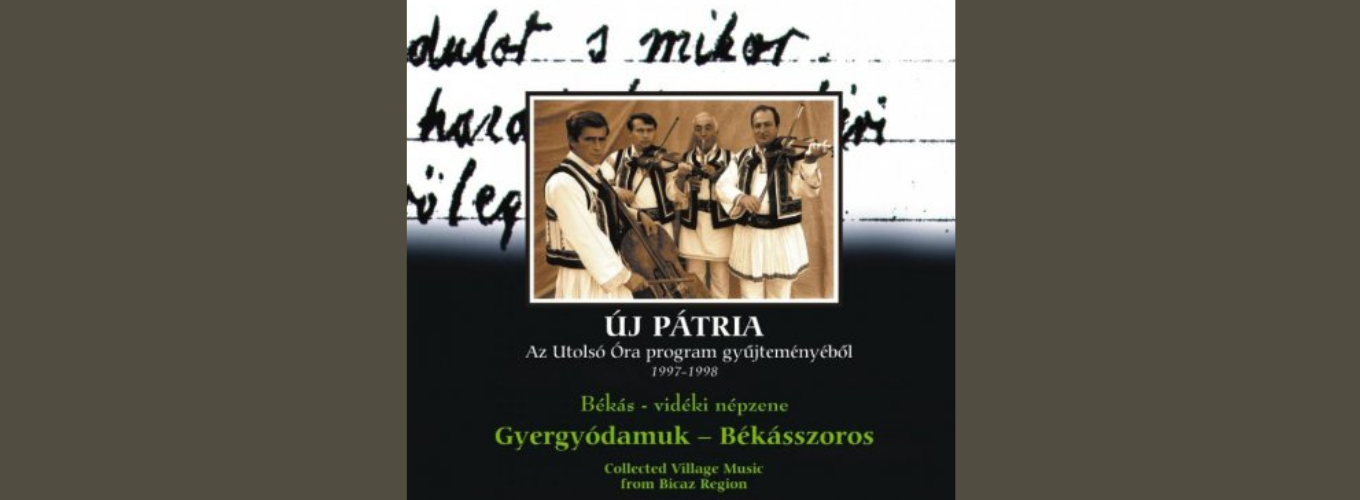
Gyergyódamuk - Békásszoros - Original Village Music from Bicaz Region - New Patria series
Given that everyone in the area raises animals, the instruments related to shepherding are also found here, such as the wooden flute, kaval or the bucium (mountain horn). The alpine horn is used exclusively for communication, even when it's blown from the church tower, signaling the resurrection at Easter. The fast part of the shepherd's tune performed on kaval (When the shepherd lost his sheep...) is played on the violin in the next selections as a bagpipe imitation.
The songs and ballads associated with shepherding are still part of a living tradition in the area, the legend of how Gyilkos Lake was formed is an example of shepherd related folklore.
1.Ardeleanca (Erdélyes)
2.Ardeleana és Maria
3.Polka, sírba és invirtitá I.
4.Pakulár - nóta
5.Cimpoiul (Dudautánzás)
6.Invirtitá I.
7.De purtat és Floricica
8.Capitane, capitane (Katonanóta
9.Medvetánc
10.Capra, gaseasca (Kecsketánc)
11.Báráboi (Dudautánzás)
12.Dantul fetelor és invirtitá (Lánytánc)
13.Halotti vers és halottkísérő ének
14.De jele, joc de doi (Keserves és kettős)
15.Invirtitá II.
16.Utcai ének, vőlegény-búcsúzó és mars
17.De botá (Férfitánc)
18.Polka, sírba és invirtitá II.
19.Bucium (Havasi kürt)
ADATKÖZLŐK / PERFORMERS - INFORMANTS
GĂINĂ Alexandru (1933) – furulya, kaval, havasi kürt (bucium), ének / wooden flute, kaval, alpine horn, voice
MOGA Toader (1968) – hegedű (jobboldalt) / violin (right hand speaker)
BOANŢĂ Simion (1961) – hegedű (baloldalt) / violin (left hand speaker)
GÎRBULEŢ Ion (1968) – „doba” (gardon) / hit-cello